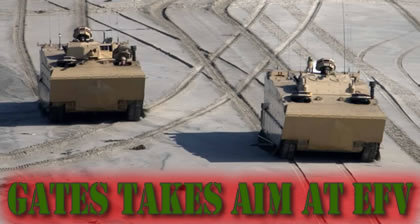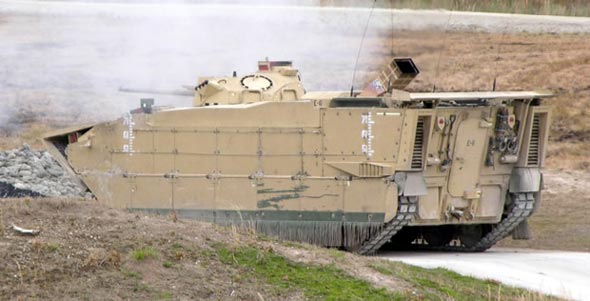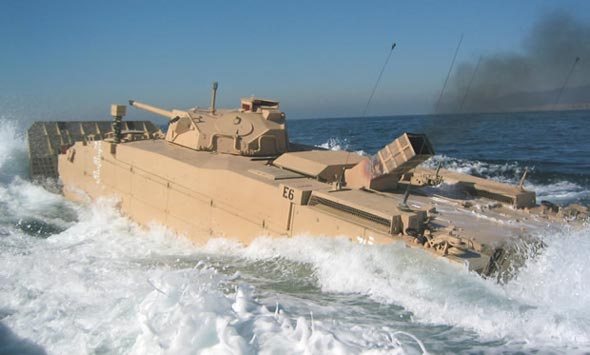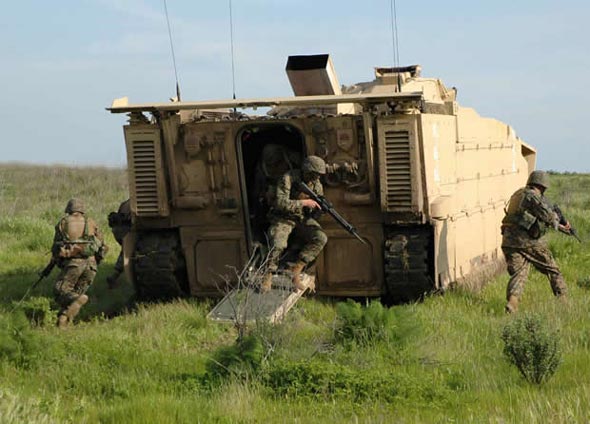The U.S. Defense Department will take a “hard look” at whether the U.S. Marine Corps’ really needs the Expeditionary Fighting Vehicle (EFV) being developed by General Dynamics Land Systems (NYSE:GD). Development of the EFV began in 1996. The corps initially planned to buy 1,025 EFVs at a total cost of $8.5 billion. As the vehicle’s cost increased to $13.5 billion, the planned procurement was trimmed to 593 vehicles in 2007.
Addressing a military audience at the U.S. Naval War College today (April 17, 2009) Defense Secretary Robert Gates, said the Pentagon will take a realistic view of the need for combat amphibious landing in future conflicts. Reexamination of the need for EFV would be part of the planned quadrennial review Gates said.
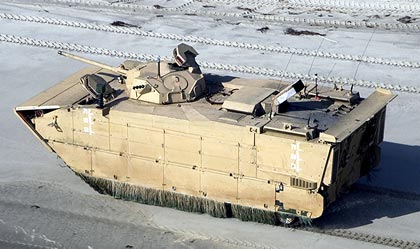
The Marine Corps was depending on the EFV to provide its future ship-to-shore combat amphibious capability, replacing its aging AAV-7 amphibious armored personnel carriers. The introduction of the EFV was part of the Marine Corps armored transport modernization plan – a proposed vehicle triad supporting future combat capabilities. The fully amphibious EFV is designed to carry 18 marines from ship to shore, providing fire support with automatic cannon capable of engaging targets at 2,000 meters. The second tier will be provided by the Marine Personnel Carrier (MPC), a non-amphibious wheeled vehicle, capable of transporting and supporting eight marines in combat. The third vehicle in the triad is the highly maneuverable, wheeled Joint Light Tactical Vehicle (JLTV) capable of transporting four to six marines.
Expeditionary Fighting Vehicle – EFV (US Marine Corps)

